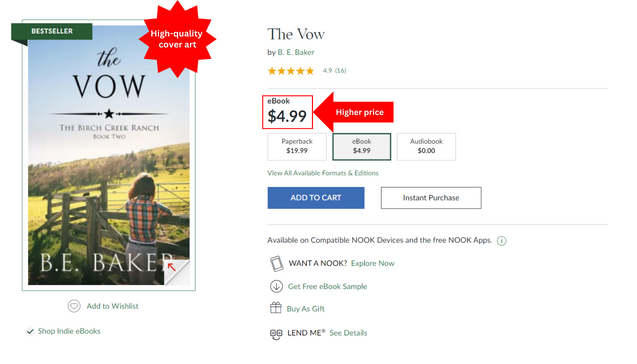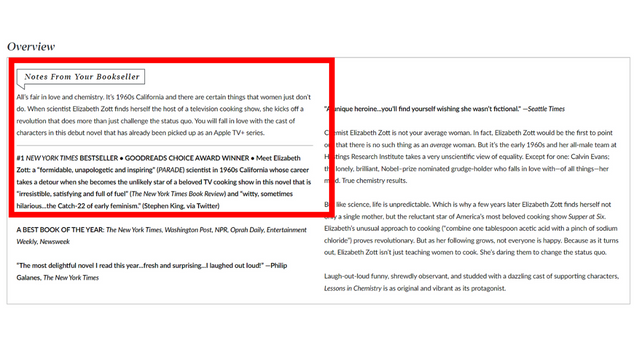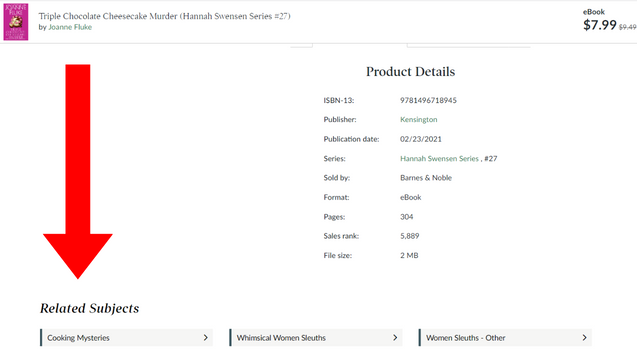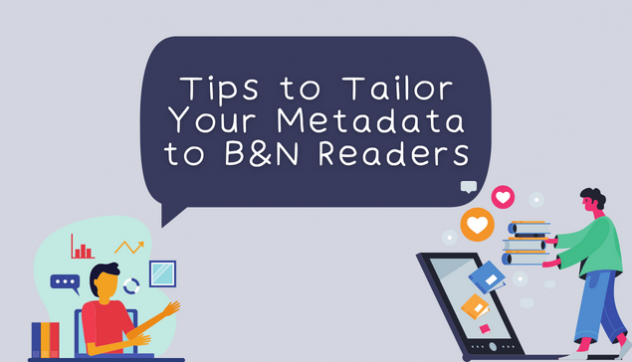You might think all book retailers are the same, but the truth is that adjusting your metadata for B&N Readers, specifically, is one of the key ways to improve discoverability and sales.
If you’re new to self-publishing, you may be wondering – what the heck is metadata? As described in our Author Tools & Tips “Metadata Basics” Guide, metadata “is information about your book. It includes everything from title, subtitle, and author, to format, pub date, page count, and trim size.”
While including this information is standard across all retailers, it’s important the information is also accurate. Incomplete and/or incorrect information about your book will negatively impact who can find and ultimately want to buy your book.
And, once you have those basics down, tweaking your metadata for B&N readers might be best way to reach them. Because, the secret is, B&N readers really are different!
Here’s our main tips to tailor your metadata for B&N readers:
The Price
The first thing a prospective reader sees when visiting your title’s product page (other than the cover/title/author) is the price. And this may be the first way a prospective reader even clicks on your book in a search. The price is a huge factor in decision-making for a consumer. And that’s why it’s so prominently placed. So, finding the right price for your book is essential to growing your readership.

And here’s the thing: B&N Readers are less price conscious than readers at other retailers. However, that also means they are more discerning. While a B&N reader might be open to buying something higher-priced ($3.99, $4.99, $5.99, etc) they expect higher-quality. That means professional cover art, copy editing, formatting, and a fully realized story (with a suitable page count). That level of quality will require upfront costs, but you will ultimately benefit by the higher sales price and loyal readers who know what to expect from your books.
The Blurb
After a reader looks at the price and the cover, they’ll next read the blurb or the overview if you’re looking at BN.com. That’s the summary of your book to hook the reader into buying it. There are all kinds of ways to structure a blurb. Maybe it’s in the first person. Maybe there’s a lot of callouts to awards and recognition. Maybe it’s just a simple, abridged version of the story.
 Here’s the thing: B&N Readers come to us because we know books. We are booksellers. And in many of the traditional books published we include a short “note” to give our online presence a more conversational tone. As an indie publisher, you have control of your blurb. Try adding in a line at the beginning to capture that similar essence. Maybe it’s a review from a reader or a quote from a publication. Find a way to include your own personal “bookseller” tone to reach an undecided reader.
Here’s the thing: B&N Readers come to us because we know books. We are booksellers. And in many of the traditional books published we include a short “note” to give our online presence a more conversational tone. As an indie publisher, you have control of your blurb. Try adding in a line at the beginning to capture that similar essence. Maybe it’s a review from a reader or a quote from a publication. Find a way to include your own personal “bookseller” tone to reach an undecided reader.
The Categories
Important to know that BN.com has categories on its product pages. Now, readers can discover new books by clicking on a category from a product page and searching for related titles. We already know this is a great way to enhance search and discovery so aligning your categories correctly is imperative.

Here’s the thing: B&N Readers read a lot of traditionally published books. But that doesn’t mean indie content has to get lost in the shuffle. Just like how you might plan your cover art, take a look at other books in your genre – both traditionally published, and indie published – and scope out those categories. Look at the Top 100 eBooks and Top 100 indie eBooks lists to see what’s trending. Review the categories for these top books and see where your book might fit.
The Pub Date (bonus tip!)
One final tip to remember is to make sure to pick a realistic pub date. We do advise placing your book on pre-order because this can help with marketing and promotion ahead of the release, but all that can be counteracted if you keep shuffling things around. We know life events happen that can interrupt a release schedule. And being an indie author does mean you have more flexibility. It’s one of the perks of going indie! But try to set a realistic goal to release your book on the date promised. It’s one way to build a loyal readership. Also, it won’t annoy customers who’ve already paid for that book.
Here’s the thing: Not only should you do your best to pick a date that is realistic and achievable, but be strategic about the date. For example, there are lot of books released in the month of September and during the week on Tuesdays. Try different months and different week days to see what works best for you and your readers. You might be surprised to find that a Friday in January is the perfect time to publish that new release!
These are just a few ways to help sell your books by maximizing the potential of your metadata. There’s also plenty more to learn so check out the Self-Publishing Tips & Tricks section if you’re looking for inspiration.
Write on!










